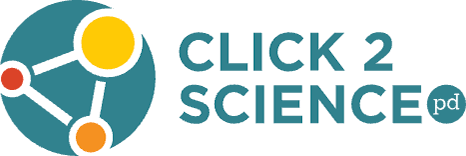Enabling Active STEM Learning
Staff and volunteers will understand that in active STEM learning youth generate knowledge which results in them learning and retaining more. They will know how to facilitate active STEM Learning experience that engage youth.
As a result of ongoing, consistent professional development efforts, staff and volunteers will be able to:
- Recognize expressions of curiosity and sense making and utilize them to enhance STEM learning experiences.
- Facilitate inquiry learning experiences that allow youth to be creative and curious as they explore phenomena in meaningful ways.
- Facilitate individual and group discussions that result in learners connecting ideas and generating their own understanding.

Resources
Skill: Enabling Active STEM Learning
What About Challenges?
Participants will reflect on programmatic challenges in order to add more active learning opportunities to their program.
View GuideSkill: Enabling Active STEM Learning
Making STEM Meaningful
Participants will apply strategies for making STEM meaningful to their upcoming activity plans to learn to get youth actively engaged in STEM learning.
View GuideSkill: Enabling Active STEM Learning
Make it Active
Participants will review strategies to get youth actively doing STEM in order to add more active learning opportunities to their program.
View GuideSkill: Enabling Active STEM Learning
Developing Skills Needed for Active STEM Learning
Participants will reflect on their facilitation to learn to get youth actively engaged in STEM learning.
View GuideSkill: Enabling Active STEM Learning
Get Active
Participants will compare active and passive learning and convert passive learning activities to more active ones in order to engage youth in active learning.
View GuideSkill: Enabling Active STEM Learning
Break It Down- In Person
Participants will learn how breaking problems into smaller, manageable parts is
key to computational thinking and build this skill.
Skill: Enabling Active STEM Learning
Break It Down – Virtual
Participants will learn how breaking problems into smaller, manageable parts is key to computational thinking and building this skill.
View GuideSkill: Enabling Active STEM Learning
Developing an Active STEM Learning Environment
Participants will compare Glurch and Oobleck to learn how to engage youth in active learning.
View Guide
Skill: Enabling Active STEM Learning
Connecting with Nature in a Concrete Jungle
Out-of-school time educators who work in urban settings may feel like they have few to no options for connecting youth to nature. It is the educator’s job to notice nature and to provide opportunities for children to observe and be curious about it. Likewise, it is the provider’s role to introduce nature to a setting when it is absent.
Learn More